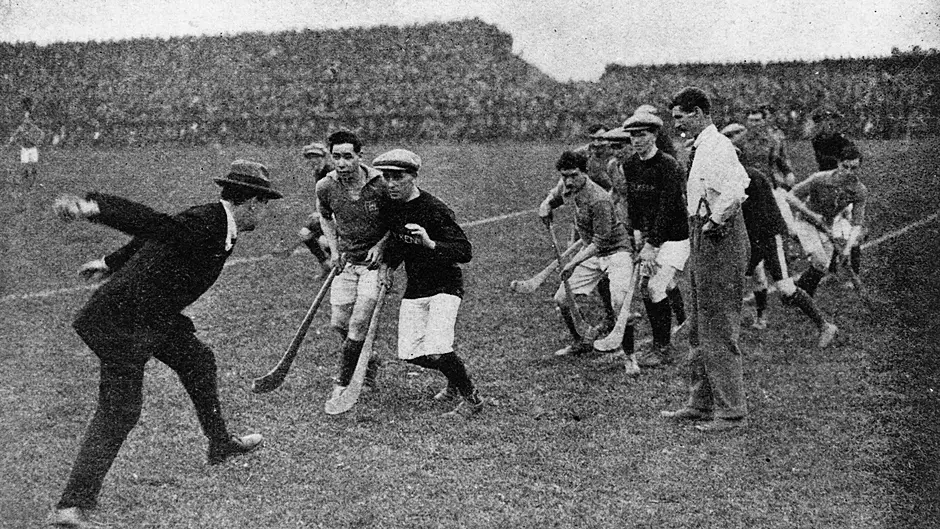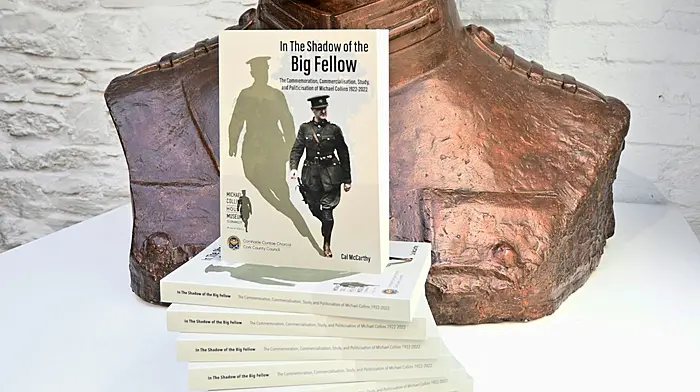This article originally appeared in our special 2022 supplement marking the centenary of Michael Collins' death – read the full supplement via southernstar.ie/epaper.
No matter how much time passes, Michael Collins will always remain a dominant figure in Ireland’s history. We all like to think we know a thing or two about him but there are plenty of lesser-known stories about the enigmatic man from Clon, says Niamh Hayes.
1.Tall tales
Michael Collins was widely known as the Big Fella, an endearing nickname that followed him throughout his career. While it might be assumed that the title referred to his physical appearance, Michael was quite an average height of 5ft 11in. So, rather than the name reflecting his stature, it is thought that it more so referred to his dominant physical presence and ‘big’ personality.
2. Big Personality
While Michael was adored by a lot of people, others who knew him thought he was somewhat overbearing. His cousin Nancy described him as the sort of man that women would either take to instinctively or subconsciously wish to put down. Some girls of his own background found him arrogant or overbearing. So maybe the nickname the Big Fella actually referred to his swollen head!
3. Very engaging
Michael’s engagement to Kitty Kiernan wasn’t widely known and it was only when he made the announcement in front of everyone in the Dáil that it became public news. Countess Markievicz joked in the Dáil that Michael was to marry Princess Mary and become ‘Governor General of the Free State’. Michael responded by saying these claims may cause pain to the Princess, as well as his own fiancée! This was the first time many learnt of his engagement.
4. Out of the shadows
At the 1921 hurling provincial decider between Dublin and Kilkenny at Croke Park, Michael Collins threw in the sliotar at the start of the game. He was there in a dignitary capacity, two months after the truce had been called. He was finally able to step out of the shadows and into the limelight as he was no longer persona non grata in the eyes of the authorities. Spectators got to witness a different side to him as he pucked around with Harry Boland before the game.
5. Grave mistake
Michael’s headstone in Glasnevin Cemetery bears the wrong birth date. A date of October 12th 1890 is inscribed on the stone but Michael was actually born on October 16th. His family planned on making this right, by redoing the headstone.
6. Family matters
Michael’s father was 75 when his son was born. Michael Snr was a member of the republican Fenian movement, but left it and settled down to farming. He died when Michael was just six years old, leaving his wife, Mary Ann, to bring up eight children. Michael Snr was 60 when he married Mary Ann in 1876, while she was just 23.
7. University education
After the 1916 Easter Rising Michael, along with thousands of other rebels, was arrested by British authorities. Rather than being executed like many of the other uprising’s leaders, he was imprisoned at Frongoch Internment Camp in Wales. The camp became known as the University of Revolution as it gave Michael and those imprisoned an opportunity for networking and training in guerrilla tactics.
8. High praise
Michael was not only admired in Ireland but was held in high esteem across the world. Yitzak Shamir was an Israeli politician who went on to be the Prime Minister of Israel in the 1980s. In 1940 he joined a militant group in Palestine which battled Arabs and launched attacks against the British military. The group drew inspiration from the Irish Republican Army and Shamir’s nom de guerre was Michael, named after his hero Michael Collins.
9. Local inspiration
Two local West Cork men are said to have inspired Michael’s pride of Irishness. James Santry was a local blacksmith and Denis Lyons was his headmaster at Lisavaird National School. They were both nationalists, with Denis being a member of the IRB and James’ family participating in the rebellions of 1798, 1848 and 1867. Their beliefs and lifestyles had a lasting impact on Michael throughout his life.
10. Sporting chances
Michael was always quite athletic and especially enjoyed wrestling. He won a local wrestling championship as a child and continued to enjoy wrestling as he grew older. He also excelled in other sports such as running, jumping and horse-riding. However, his fiery temper often led to a punch-up on whatever field he was on!










